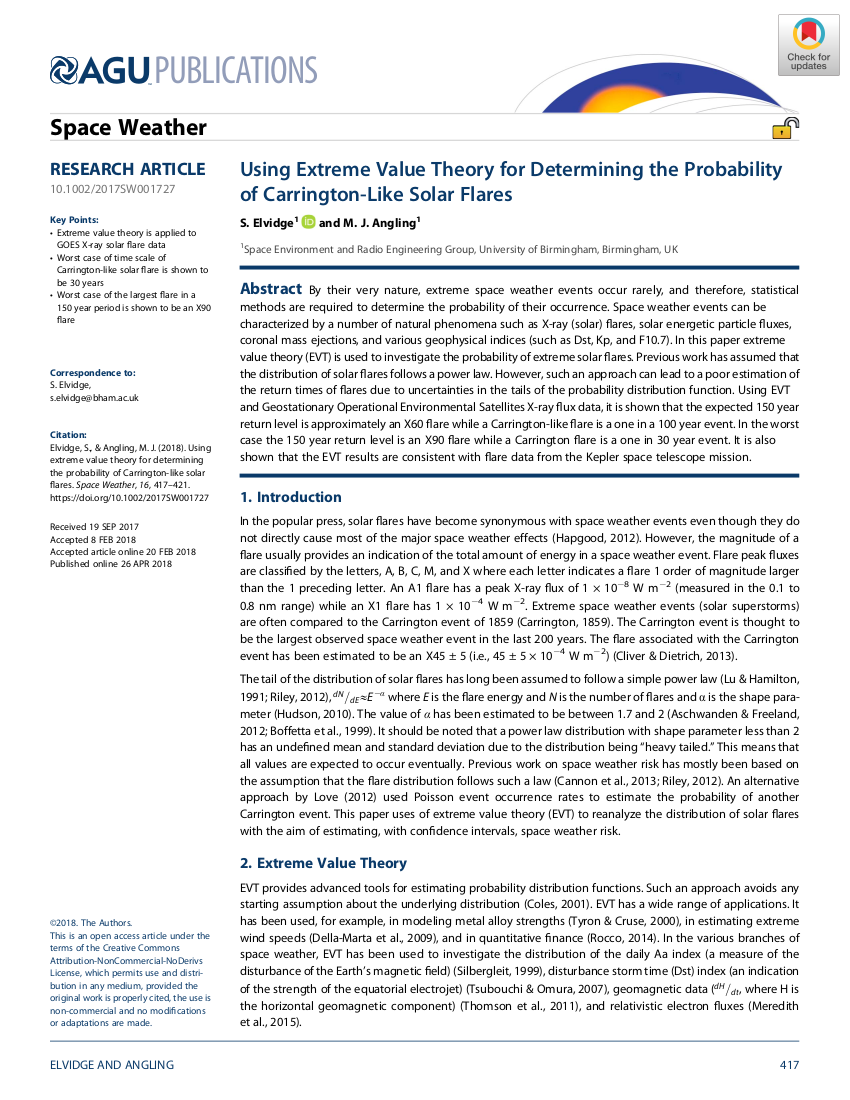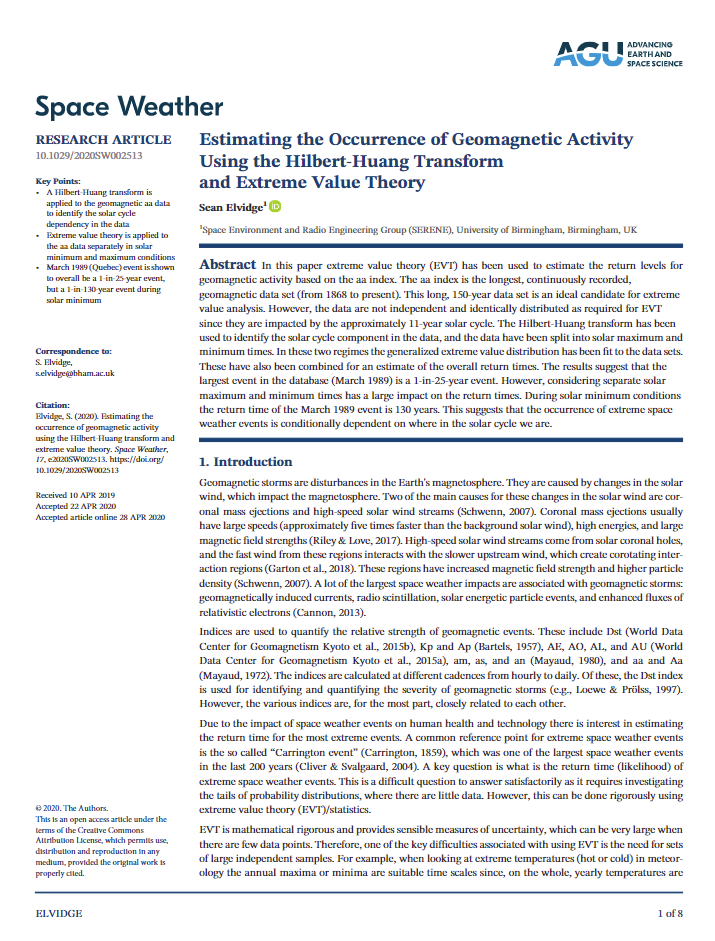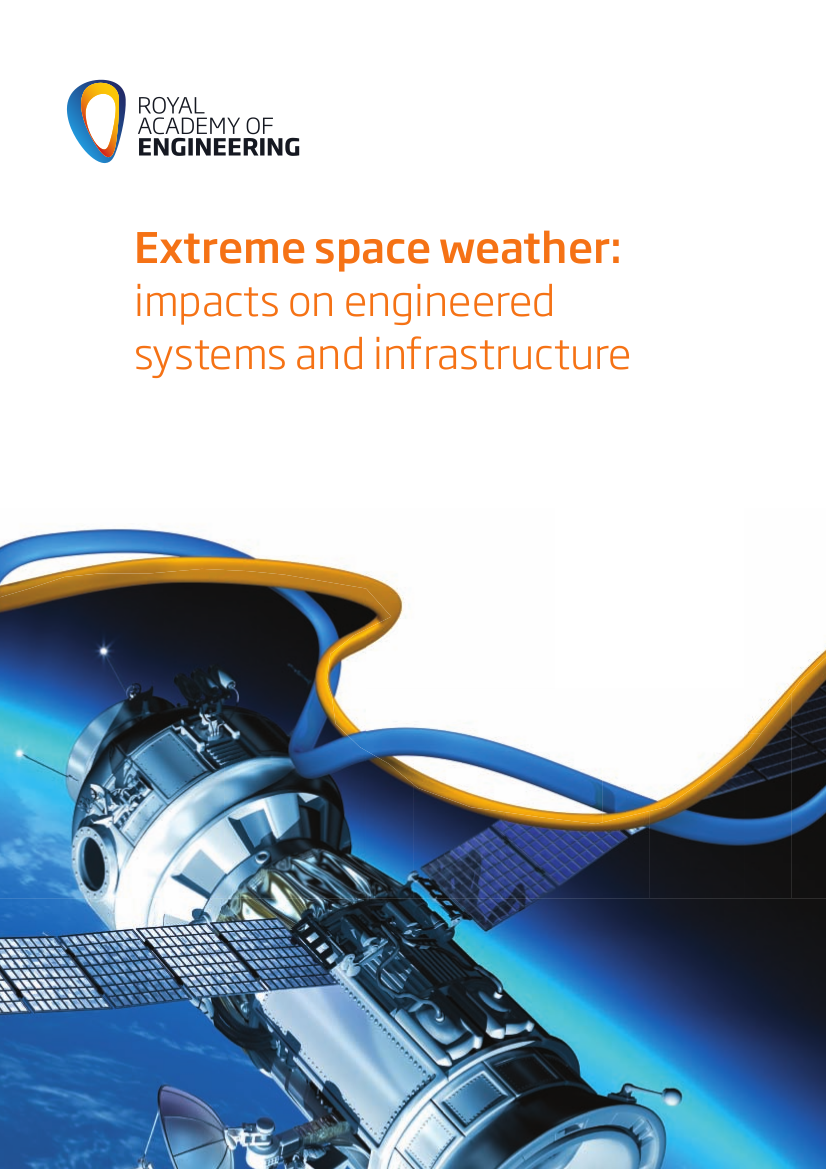Extreme Space Weather
Rarely occurring solar superstorms generate X-rays and solar radio bursts, accelerate solar particles to relativistic velocities and cause major perturbations to the solar wind. These environmental changes can cause detrimental effects to the electricity grid, satellites, avionics, air passengers, signals from satellite navigation systems, mobile telephones and more. They have consequently been identified as a risk to the world economy and society.
These randomly occurring events are low-probability but high impact.
Explosive eruptions of energy from the Sun that cause minor solar storms on Earth are relatively common events. In contrast, extremely large events (superstorms) occur very occasionally – about once every century. Most superstorms miss the Earth, travelling harmlessly into space. Of those that do travel towards the Earth, only half interact with the Earth’s environment and cause damage.
Since the start of the space age, there has been no true solar superstorm and consequently our understanding is limited. There have, however, been a number of near misses and these have caused major technological damage, for example the 1989 collapse of part of the Canadian electricity grid. A superstorm which occurred in 1859, now referred to as the ‘Carrington event’ is the largest for which we have measurements; and even in this case the measurements are limited to perturbations of the geomagnetic field. An event in 1956 is the highest recorded for atmospheric radiation with August 1972, October 1989 and October 2003 the highest recorded radiation events measured on spacecraft.
How often extreme space weather events occur is an important area of current research.
Research at SERENE is focused on using rigorous mathematical techniques to estimate the occurence of the most extreme space weather events.


